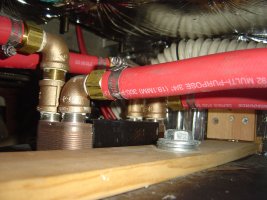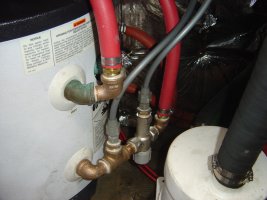wurzner
Member III
I currently have my hot water heater patched into the fresh water side of my engine and am planning to put in a Espar Hydronic D5. At this time, I'm considering plumping it so my radiators will have the ability to heat the boat (and H2O heater) when motoring using engine heat or the diesel heater. The downside is if anything breaks in the circuit, I lose my freshwater cooling. The other option is plump my H20 into the hydronic an completely separate both circuits.
I like option one in the sense that I have the option of heating the boat when motoring or running the diesel heater. I don't like the fact that if any part of the circuit fails...I'm screwed. The third option is to plump them all together, and have 2 three way valves to eliminate the H20 and heating system in the event of a leak.
Anyone want to contribute some workds of wisdom? As usual. I'm willing to pay the equivlent of Loren's consulting fees of 02 cents to anyone who requires compensation.
Thanks to Craig and Ellen on Pilot Project for letting me take photos of their installation...it will sure help me out in the long run.
regards
shaun
S/V Sorcerer
Ericson 38-200 1986
I like option one in the sense that I have the option of heating the boat when motoring or running the diesel heater. I don't like the fact that if any part of the circuit fails...I'm screwed. The third option is to plump them all together, and have 2 three way valves to eliminate the H20 and heating system in the event of a leak.
Anyone want to contribute some workds of wisdom? As usual. I'm willing to pay the equivlent of Loren's consulting fees of 02 cents to anyone who requires compensation.
Thanks to Craig and Ellen on Pilot Project for letting me take photos of their installation...it will sure help me out in the long run.
regards
shaun
S/V Sorcerer
Ericson 38-200 1986


